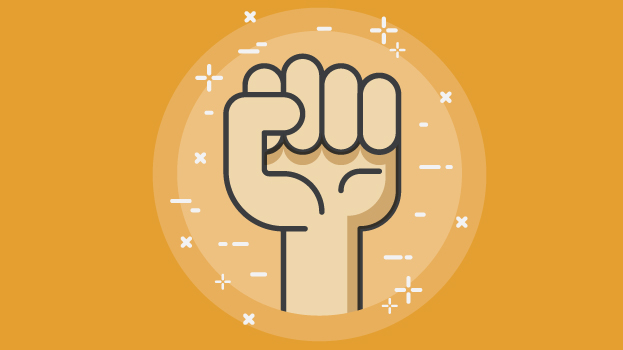The age-old question of gender equality in the workforce endures to the present day. But will we be able to make progress for equal representation if men and women do away with traditional roles and stigma?
The short answer? Well, there isn’t one. But this is where it gets interesting.
At A Glance
The discussion of gender equality at work is nothing new in Australia.
Women account for 47% of the national workforce; a third of whom work part-time.
In terms of education, the odds appear to lean slightly in women’s favour. In 2015, women made up 55 % of university students in Australia.
However, things change drastically after graduation.
The gender gap – in both representation and pay – begins here, and is evident in every industry and at every occupational level.
Amongst C-suite and executive roles, women are still few and far between.
Women make up 16.5% of CEOs or heads of business, 29.7% of key management positions, and 24.9% of board members.
According to the Workplace Gender Equality Agency (WGEA), as of 2018, women earn roughly $253.70 less than men per week.
This disparity also affects life within and around the workplace. One in five women aged 18–64 experience sexual harassment, while one in three women 15 and over experience physical violence when they leave the office.
Furthermore, one in five mothers are made redundant, and one in two experience discrimination at work. Lack of flexibility and acceptance is a particularly pressing concern for working mothers.
The World Economic Forum Global Gender Gap Report 2016 revealed that out of 144 countries measured for gender parity, Australia came in at 46, just after the United States. On the global scale, these statistics suggest that Australia may not quite be leading by example.
The Issue
As we examine gender representation across the Australian labour force, one thing is clear: almost every industry in the job market is alarmingly gendered.
According to the last census, of the top 30 jobs in Australia, all but a handful were skewed more than 75 per cent towards either men or women.
Women are most concentrated in Health Care and Social Assistance (80.2% female) and Education and Training (63.4% female).
Globally, across all industries, women currently make up on average 33% of junior level staff, 24% of mid-level staff, 15% of senior level staff and 9% of CEOs.
The Cause
This gender segregation we observe today stems from a number of widespread cultural factors. These intangible yet ingrained notions and phenomena shape our society in more ways than we might think.
Whilst talent pools are expanding, and the exclusion and segregation of women from certain fields is hardly as conscious and strategic as it was in the past, institutional issues persist. Why?
Ultimately, the driving force behind these patterns of behaviour is culture – something which goes far deeper than legislation or public discourse and influences everything from the micro to the macro level, standing even the test of time.
“We still have attitudes and workplace practices that are a direct result of the attitudes and practices of the fifties and sixties.”
– Avril Henry, internationally-acclaimed keynote speaker, author and leadership strategist
Certain cultural perceptions (or misconceptions) lead to unconscious biases; many of which are internalised by women themselves.
Research suggests that women are less likely to aspire to high-tier executive roles, discouraged by the stress or pressure of the role.
Their ambition may well be dissuaded by stereotypes implying that successful and career-focused women are less ‘feminine’ and ‘approachable’, and that such success comes more from hard work than skills.
The World Economic Forum also notes the unfortunate nature of this vicious circle. The historically scarce participation and representation of women in the labour market means fewer role models for working women today, which in turn serves to further complicate the personal experiences – and cloud the public perceptions – of women at work.
Progress?
There is certainly talk of change.
Lack of dialogue and awareness around diversity and equity may hinder said change, but there is an increasing amount of attention placed on gender imbalances in the job market, whether through media coverage, public opinion or government regulation.
The latter has had a notable impact, as the diversity policy implemented by the ASX Corporate Governance Council led to an increase from 8 to 26% in the number of female board members of ASX-listed companies in 2009.
Also, over 1 million Australian workers are now able to take leave and benefit from other protections thanks to the addition of domestic violence clauses in workplace agreement and award conditions in 2016.
Some studies conducted overseas also suggest things are improving slowly but surely.
Recent statistics from US recruitment agency CareerBuilder showed from 2009 to 2017, 23% of all jobs traditionally held by men were filled by female workers, such as CEOs, lawyers, surgeons, web developers, chemists and producers.
Meanwhile, during the same time period, men took 30% of the new jobs in positions typically held by women. Currently 27% of all female-dominated occupations are held by men, such as education administrators, pharmacists, interior designers, cooks, accountants and human resources managers.
“Women and men are sidestepping preconceived notions and crossing over into roles that historically have been heavily populated by the opposite sex.”
– Rosemary Haefner, chief human resources officer, CareerBuilder
According to the Centre for Future Work at the Australia Institute, since the financial crisis, the proportion of men working in the female-dominated sectors of healthcare, aged care and social assistance has gone up.
That said, the number still stands at a mere 20% – and only one in ten Australian nurses are male.
Interestingly, the most equally-represented roles across the board include retail managers, accountants, kitchen hands, and contract, program and project administrators.
The well-substantiated argument for many advocates of gender equality highlights the remarkable advantages of diversity in the workplace:
“Smart CEOs and executives recognise that diversity is good for business and in order to stay ahead of their competitors to attract and retain the best and brightest candidates, they must be driving an inclusive workplace culture with offering such as flexible working arrangements, access to comprehensive parental leave and equal pay for women and men.”
– Libby Lyons, Director of the Workplace Gender Equality Agency (WGEA)
Progress is not always concrete and definite. In terms of equal representation and treatment in the workforce, it may feel like for every step forward, we take two steps back.
What will push us to prioritise diversity and make inequality a thing of the past, knowing that it can be addressed and recognising the benefits it would bring?
If you’re passionate about gender equality and wish to support people making a difference for the good of both women and men, be sure to check out our not-for-profit organisation, LeadUp!













 November 27, 2018
November 27, 2018 







